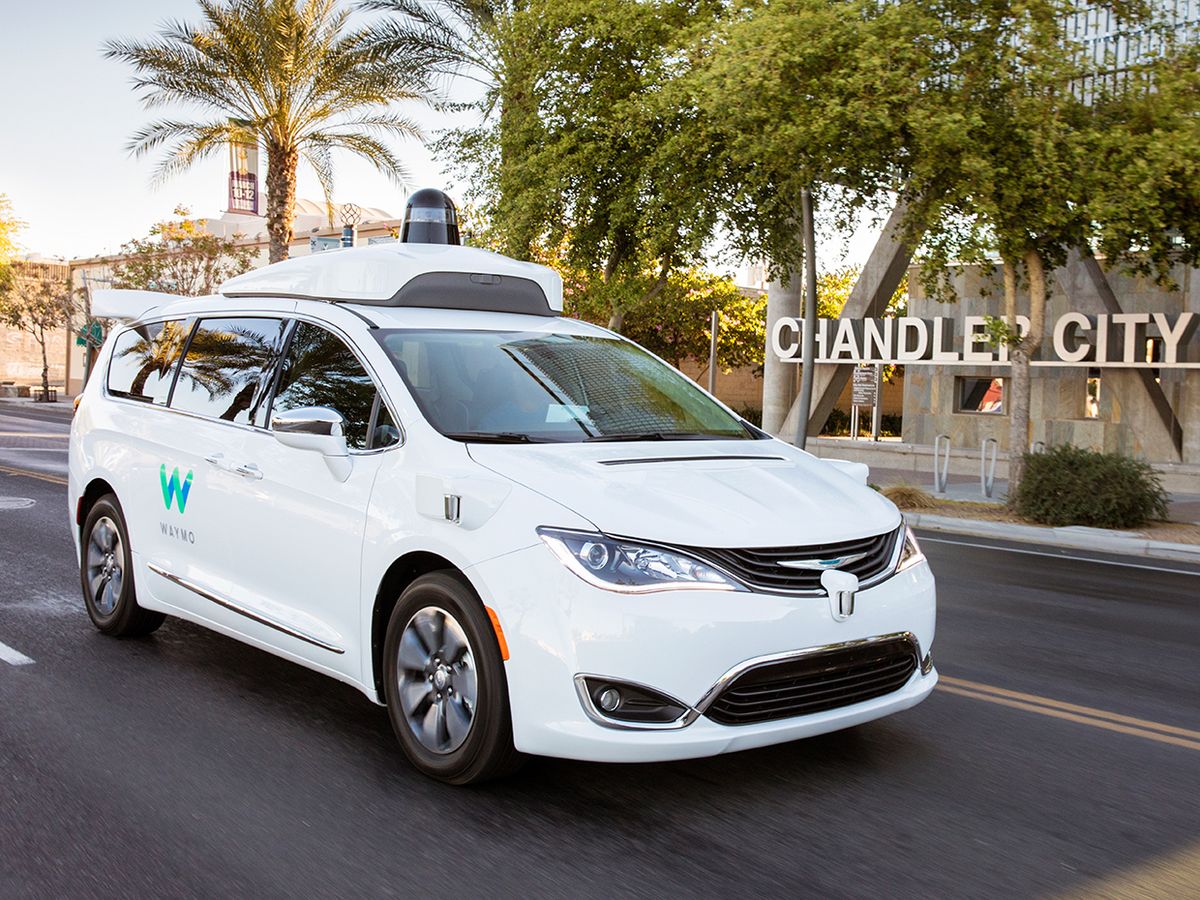Waymo is about to announce that its robocar ride-sharing program in Phoenix will dispense with its backup driver, according to a story in TheInformation.com. That would make it the first-ever commercial application of true self-driving technology.
The report cites two unnamed sources, apparently engineers unhappy with the fast pace that management has decreed for the rollout of the new service. The CEO of Waymo is John Krafcik, but the ultimate authorities are Sergey Brin and Larry Page, the heads of Alphabet, the holding company for Waymo and its big brother, Google.
Waymo declined to answer IEEE Spectrum’s request to confirm or deny the story. We’ll take that as a qualified “maybe.”
Five years ago, Brin famously promised to have a self-driving car on the road within five years. Maybe he thinks the time has come to put up or shut up. If the company isn’t ready to remove the backup driver this year, perhaps it would content itself with an announcement that it will do so next year.
Waymo is under pressure to show pre-eminence in the field that it pioneered, but so are the two dozen-odd other players. Among those rumored to be near some sort of demonstration of ready-for-the-road robodriving are NuTonomy, the ride-hailing service that debuted last year in Singapore; Uber; Tesla; and most of the big car companies.
Audi took the lead three months ago with the unveiling of its Audi 8, which it says was the first car that has what it takes to reach Level 3 autonomy. That’s when the driver can read a newspaper but must always be prepared to take back the wheel within about 10 seconds if the car should have trouble.
What must an aspiring robocar company do to get ahead of the pack? I mean, beside administering sedatives to its lawyers and amphetamines to its publicists?
The first priority is to solve any outstanding tech problems. According to the account in TheInformation, Waymo’s cars still have trouble making left turns into traffic, particularly when there’s no left-turn arrow to serve as a guide. Another sticking point is navigating any area that Waymo’s superprecise maps haven’t sampled much, like shopping-center parking lots.
You must also choose your venue wisely, and this Waymo has done. The current ride-sharing problem is in the Chandler suburb of Phoenix, where the intersections are simple, the weather is balmy, and the legal environment is mild.
Finally, you should listen to your own engineers. If they say you’re going too fast, slow down. Moving fast and breaking things isn’t good in the auto business. And if you don’t listen to your technical people, they may resort to leaking rumors to the press, as seems to have happened here. Worse, your best people may up and leave.
When a Tesla car equipped with Autopilot slammed into the side of truck, killing the driver, Tesla’s then-partner Mobileye threw a fit. The head of Mobileye accused Tesla of selling Autopilot as a self-driving technology when it was still just a driver-assistance feature. Tesla split with Mobileye, which Intel went on to acquire.
Philip E. Ross is a senior editor at IEEE Spectrum. His interests include transportation, energy storage, AI, and the economic aspects of technology. He has a master's degree in international affairs from Columbia University and another, in journalism, from the University of Michigan.



